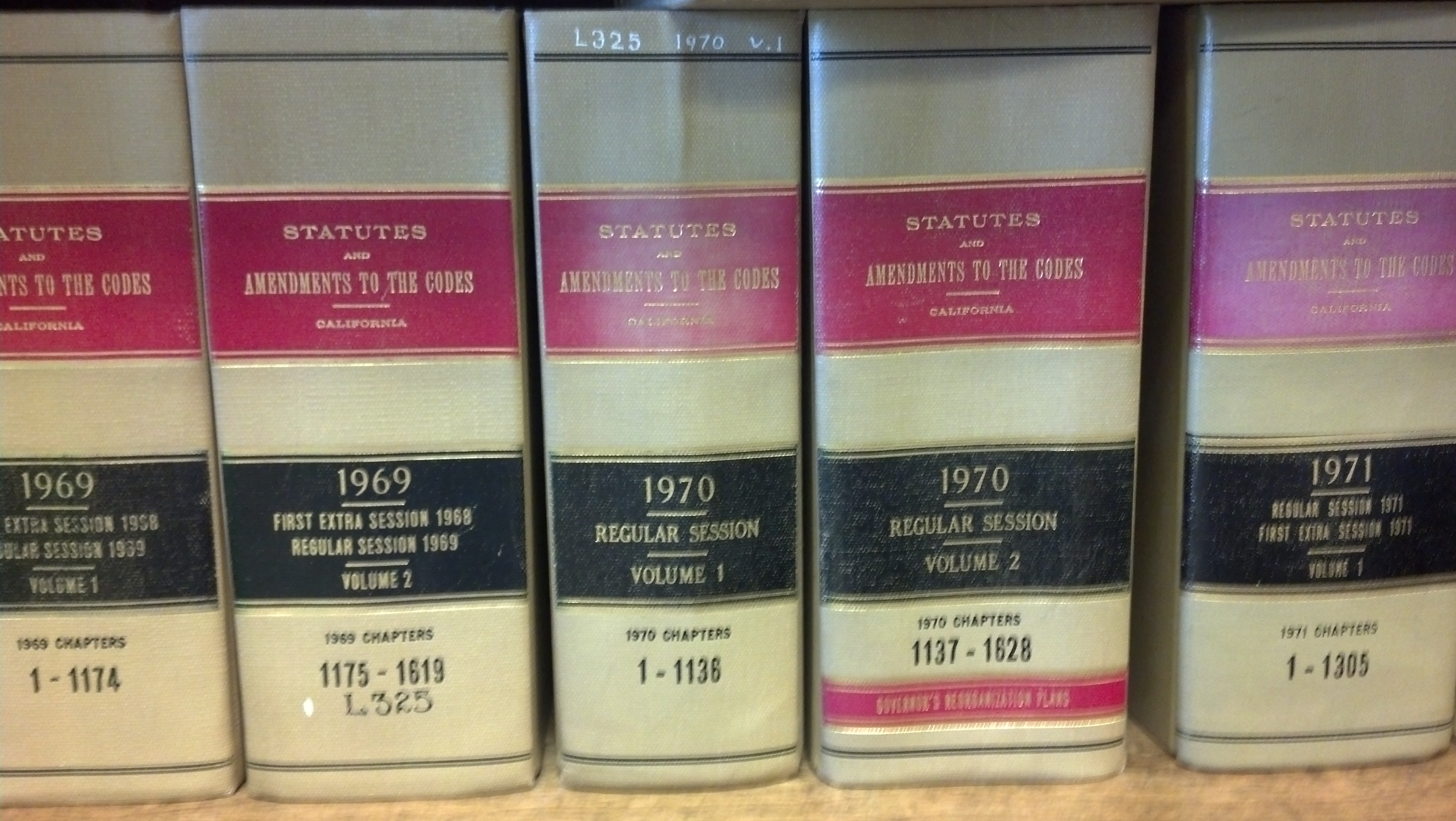A statute’s language may have a fairly complicated history and the annotations accompanying the major code books published may not provide you with the specific changes that were legislated for each of the bills identified in the annotations for the statute.
At this point, it becomes necessary to “trace” your language to find out which one legislative measure brought in your language of interest within the statute in question.
The Statutes at Large for California go back to 1850 and you should be able to find these chapter books at your local law library. When the governor signs any bill into law, the secretary of state will assign a “chapter” number to the enactment for that legislative session.
At your library, take over a large table with your selected chapter books set out in chronological order, opened, for you to peruse.
Reviewing your selected chapters in this way is a fairly straight-forward process that allows you to see how your specific language of interest originally looked and then as it was changed through later amendments and possible re-enactments and further amendments.
It is always important to know your year or legislative session of interest because every legislative session has the same chapter number. For that matter, every legislative session will have the same Assembly and Senate Bill numbers – you could find yourself reviewing the wrong bill if you do not look at the correct year for the bill of interest.
Let’s look at an example: California Revenue and Taxation Code § 219. The codebooks’ annotations tell us the following history:
Prior History:
- Former R&T § 219, added 1968x, c. 1x; amended 1969, c. 671; 1969, c. 1526; 1970, c. 298; 1971x, c. 1x
- Former R&T § 219, re-added 1972, c. 1406; amended 1974, c. 1441
Added: 1980, c. 411 – reads as it does today.
Amended: None thus far.
Below, I am pasting “snippets” from the above-noted chaptered laws that affected the early language of § 219.
By reviewing the changes that occurred from the very first time the statute was added as a former section through the years to the more current derivation, the researcher can determine which legislation brought in specific language of interest within that statute. That particular legislation would be the bill to order for legislative history and intent research.
1968x, c. 1x:
1969, c. 671:
1969, c. 1526:
1972, c. 1406:
1974, c. 1441:
You have accomplished a successful trace!










